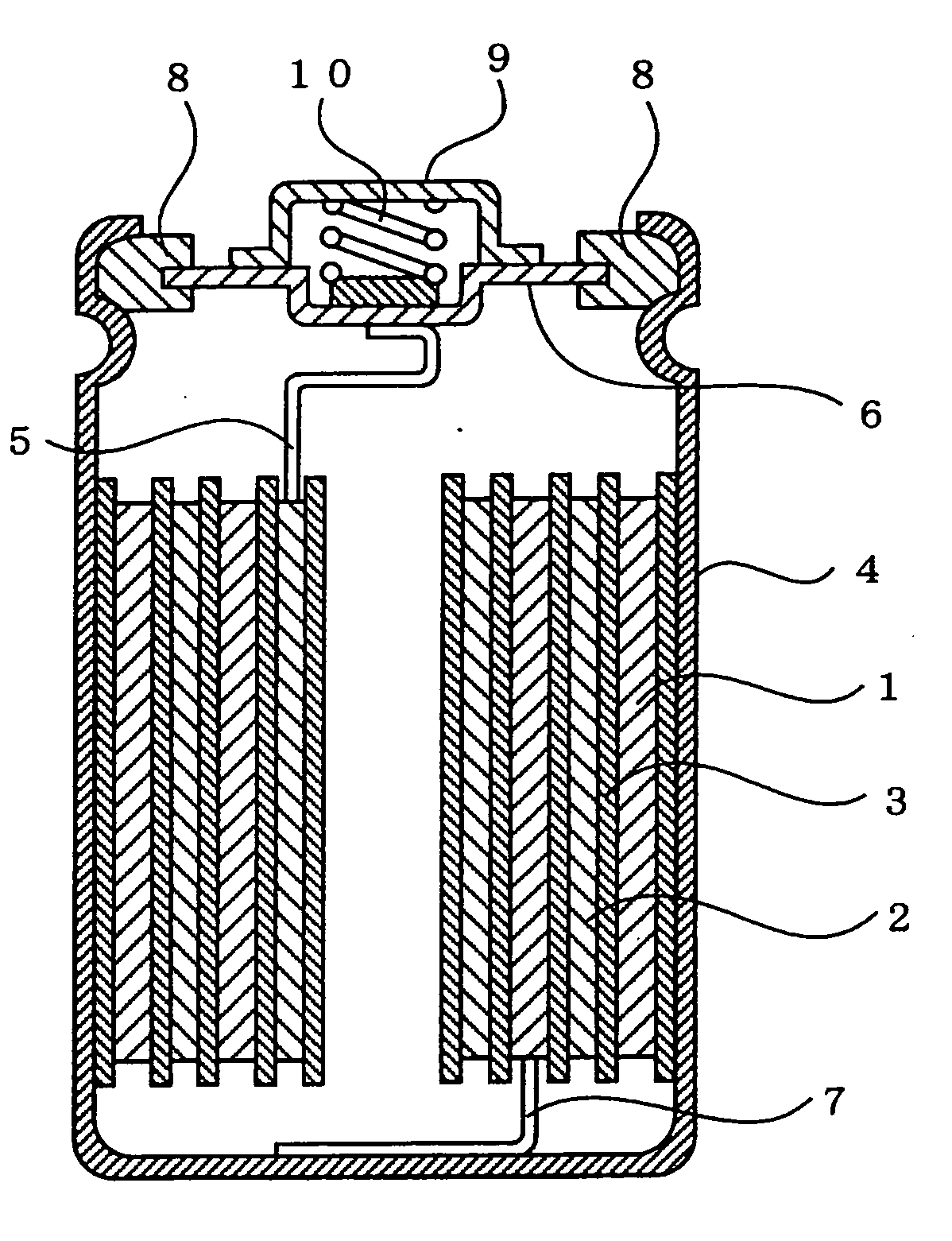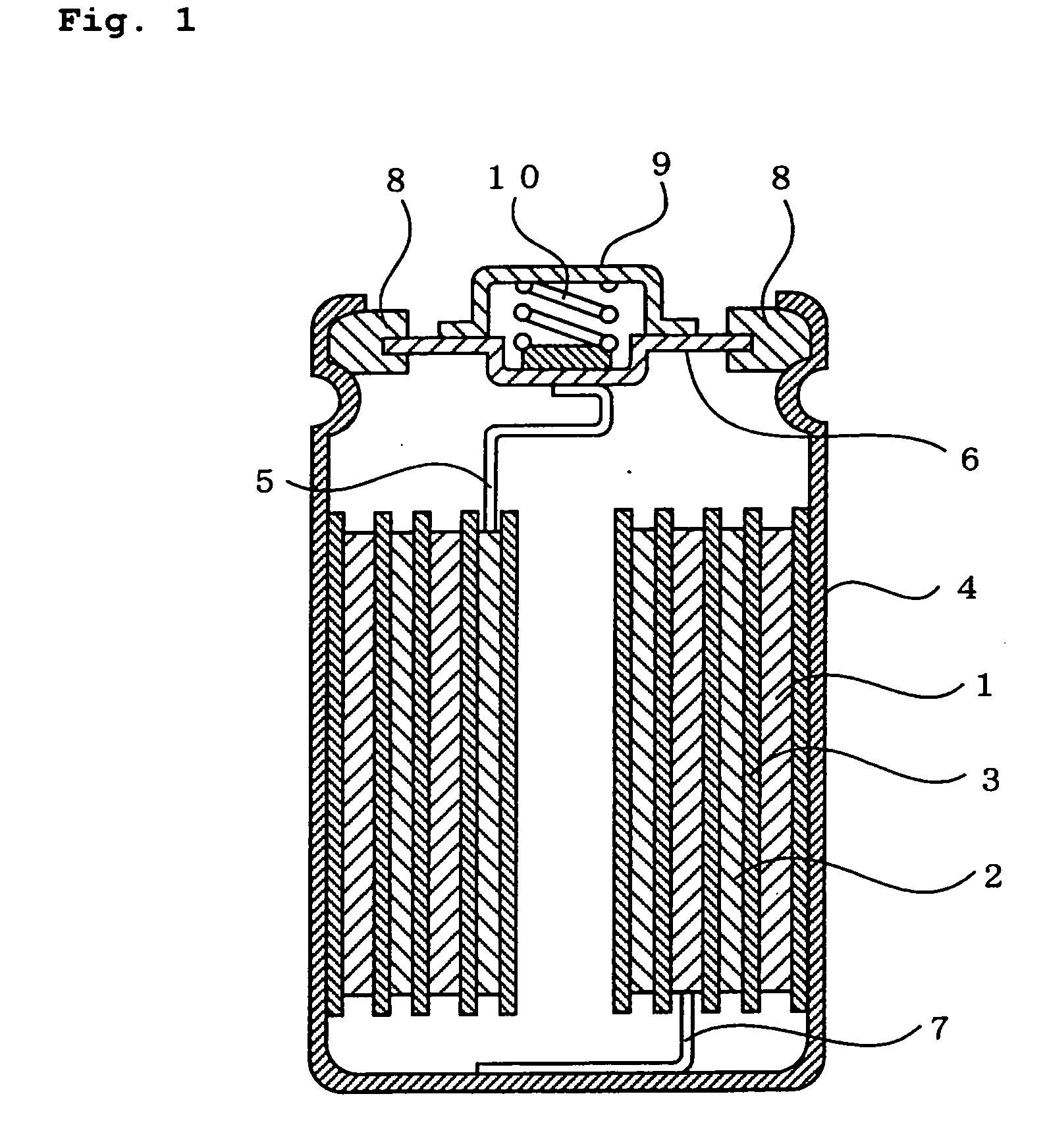Hydrogen-absorbing alloy for alkaline storage batteries and alkaline storage battery
a technology of alkaline storage batteries and alkaline storage batteries, which is applied in the direction of cell components, electrochemical generators, and can solve the problems of not having sufficient hydrogen-absorbing capability, difficult to further increase the capacity of nickel-metal hydride storage batteries, and insufficient hydrogen-absorbing alloys. , to achieve the effect of preventing hydrogen-absorbing alloy pulverizing and being oxidized, and improving the hydrogen-absorbing capacity of the negativ
- Summary
- Abstract
- Description
- Claims
- Application Information
AI Technical Summary
Benefits of technology
Problems solved by technology
Method used
Image
Examples
example 1
[0019] In Example 1, a hydrogen-absorbing alloy powder for the negative electrode was prepared as follows. Rare-earth elements La, Pr, and Nd were mixed with Mg, Ni, Al, and Co so that a predetermined alloy composition was obtained. Thereafter the mixture was melted at 1500° C. by an induction furnace, and was then cooled to obtain an ingot of hydrogen-absorbing alloy. The composition of the resultant hydrogen-absorbing alloy was analyzed by inductively-coupled plasma spectrometry (ICP), and consequently, the composition of the hydrogen-absorbing alloy was found to be (La0.2Pr0.5Nd0.3)0.83Mg0.17Ni3.03Al0.17CO0.10.
[0020] The ingot of the hydrogen-absorbing alloy was annealed at 950° C. for 10 hours in an argon atmosphere, and thereafter the ingot of the hydrogen-absorbing alloy was mechanically pulverized in an inert atmosphere, whereby a powder of the hydrogen-absorbing alloy with the foregoing composition was obtained. Here, the resultant hydrogen-absorbing alloy powder was analyz...
example 2
[0026] In Example 2, a hydrogen-absorbing alloy powder for the negative electrode was prepared in the same manner as that in Example 1 above, except that the mixture ratio of the rare-earth elements La, Pr, and Nd to Mg, Ni, Al, and Co was changed from that of Example 1 above, so that a hydrogen-absorbing alloy powder was obtained having a composition of (La0.2Pr0.5Nd0.3)0.89Mg0.11Ni3.17Al0.23Co0.10 and a weight-average particle size of 65 μm.
[0027] Then, a cylindrical alkaline storage battery having a design capacity of 1500 mAh was fabricated in the same manner as in Example 1 above, except that this hydrogen-absorbing alloy powder was used.
example 3
[0028] In Example 3 as well, a hydrogen-absorbing alloy powder for the negative electrode was prepared in the same manner as that in Example 1 above, except that the mixture ratio of the rare-earth elements La, Pr, and Nd to Mg, Ni, Al, and Co was changed from that of Example 1 above, so that hydrogen-absorbing alloy powder was obtained having a composition of (La0.2Pr0.5Nd0.3)0.79Mg0.21Ni3.03Al0.17Co0.10 and a weight-average particle size of 65 μm.
[0029] Then, a cylindrical alkaline storage battery having a design capacity of 1500 mAh was fabricated in the same manner as in Example 1 above, except that this hydrogen-absorbing alloy powder was used.
PUM
| Property | Measurement | Unit |
|---|---|---|
| particle size | aaaaa | aaaaa |
| porosity | aaaaa | aaaaa |
| weight-average particle size | aaaaa | aaaaa |
Abstract
Description
Claims
Application Information
 Login to View More
Login to View More - R&D
- Intellectual Property
- Life Sciences
- Materials
- Tech Scout
- Unparalleled Data Quality
- Higher Quality Content
- 60% Fewer Hallucinations
Browse by: Latest US Patents, China's latest patents, Technical Efficacy Thesaurus, Application Domain, Technology Topic, Popular Technical Reports.
© 2025 PatSnap. All rights reserved.Legal|Privacy policy|Modern Slavery Act Transparency Statement|Sitemap|About US| Contact US: help@patsnap.com


